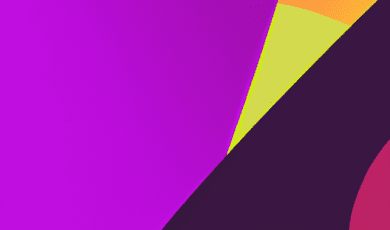
In the ever-evolving landscape of global communication, the demand for seamless and accurate translation services has surged. For businesses, academics, travel and individuals alike, German translation services play a pivotal role in breaking language barriers, fostering cross-border partnerships, and ensuring legal compliance. From certified translation to vital business documents, the balance of human expertise and machine power has reshaped how content is translated, particularly for official translation German to English. This post explores the fusion of traditional linguistic proficiency with state-of-the-art technology, offering valuable insight for anyone navigating the complex world of translation.
The Synergy of Human and Machine: A New Era in Translation
1. The Rise of Translation Technologies
The introduction of Machine Translation (MT) and Computer-Assisted Translation (CAT) tools has transformed how translation agencies and independent translators approach their work. Platforms like specialized German translation services now integrate these tools into their workflow, enhancing efficiency and scalability without sacrificing quality. However, machine power alone isn't sufficient when dealing with nuanced texts that require cultural sensitivity or legal precision—a domain where human expertise remains irreplaceable.
2. Machine Translation: Speed with Limitations
The latest iterations of neural machine translation engines, such as DeepL and Google Translate, can process vast amounts of text in seconds. These systems use artificial intelligence to identify context, patterns, and linguistic structures, which makes them invaluable for generating quick drafts or translating straightforward content. For clients seeking rapid communication—think email correspondence, product descriptions, or technical manuals—machine translation provides instant results.
However, when accuracy and nuanced meaning matter—like in official translation German to English for legal contracts or medical records—automated systems face limitations. Ambiguities, idiomatic expressions, and cultural subtleties often elude even the most advanced algorithms.
3. CAT Tools: Empowering Human Translators
Computer-Assisted Translation (CAT) tools bridge this gap by supporting human translators with features such as translation memory, term databases, and project management dashboards. These platforms facilitate consistency and speed while leaving key decisions in the hands of language experts. When handling projects that demand both speed and accuracy, CAT tools enable professionals to deliver higher quality and reduce repetition-related errors.
4. The Critical Role of Post-Editing
Post-editing has become a cornerstone of the modern translation process. After machine-generated drafts, expert linguists review and refine outputs to ensure they meet linguistic, cultural, and client-specific standards. This step is indispensable in the legal, medical, and business arenas, where inaccuracies can have significant consequences. For example, a certified translation of a birth certificate or academic transcript from German to English must fulfill both semantic accuracy and legal requirements—something only a seasoned translator can guarantee.
5. Human Expertise: The Gold Standard in Official German Translations
Human translators bring more than linguistic knowledge to the table; they possess cultural awareness, subject-matter expertise, and a nuanced understanding of context. In official translation German to English, this expertise is crucial. Legal, financial, and governmental documents require a meticulous approach—ensuring that terminology, tone, and intent are preserved. Experienced translators often hold certifications and adhere to ethical codes, safeguarding the validity and acceptance of translated documents in official settings around the world.
6. Specialized Platforms: Your Gateway to Professional German Translation Services
The modern translation industry boasts a range of specialized platforms that merge human skill with technological innovation. These services cater to varying client needs—whether it’s large-scale localization projects, certified document translation, or real-time multilingual communication. By offering access to both native-speaking professionals and cutting-edge tools, such platforms deliver comprehensive solutions for translating complex German texts with accuracy and cultural fidelity.
7. Multilingual Communication Strategies for Global Impact
In today’s interconnected world, businesses and institutions need more than translation—they require multilingual communication strategies. Machine translation and CAT tools streamline multi-language projects, but only human translators can tailor messages for specific audiences, ensuring resonance and engagement across cultures. For example, a marketing campaign entering the German market will benefit from expert localization far more than from literal translation alone. Here, professionals adapt slogans, imagery, and tone, strengthening global brand identity while respecting local nuance.
8. Staying Ahead: Continuous Training and Industry Best Practices
The rapid pace of technological change demands ongoing professional development. Translators who invest in learning new CAT tools, understanding MT post-editing best practices, and maintaining industry certifications ensure their skills stay relevant. Furthermore, reputable translation agencies encourage continuous training and uphold quality assurance protocols—promising clients both technical and linguistic excellence.
Conclusion: The Future of German Translation Lies in Collaboration
The fusion of human expertise with machine power marks a transformative era in German translation services. While artificial intelligence and digital platforms have accelerated the pace and reach of multilingual communication, the value of human input remains unparalleled—especially in high-stakes contexts like official translation German to English. By leveraging both linguistic skill and technology, organizations can achieve translations that are not only efficient but also culturally authentic and legally sound.
For translators, linguists, and language professionals, staying updated on advances in translation technologies is key to delivering top-tier services. Likewise, clients benefit from seeking trusted providers who harness the best of both worlds—a commitment to human excellence, enhanced by the speed and consistency of modern tools. Whether you are a business expanding globally or an individual needing certified document translation, choosing a platform that values this synergy is your first step towards successful communication in an interconnected, multilingual world.
For more information about specialized solutions and industry best practices in German translation, explore the resources offered by reputable platforms such as PoliLingua’s German Translation Services and learn more about the requirements for certified translations.








